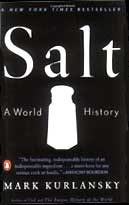
Who would have thought that something as unassuming as salt could provide the basis for such a fascinating tour through time? In Salt: A World History author Mark Kurlansky gives us a history of the world, from the perspective of the salt trade. Although we take our table salt completely for granted these days, in the not so distant past the ability to access salt was critical for a society’s survival. The main use was for preserving food – cod, herring, cabbage, meat. Those countries who had an ample supply of salt could equip armies, live through winters, and engage in the profitable trade of food that would otherwise spoil without salt. Empires have been built, massive fortunes have been made and lost, all to do with controlling the salt trade. Even in nature, where there are salt licks, there are animals, taking in this simple compound so necessary for physical survival.
Kurlansky starts us off in China four thousand years ago where the act of drilling was first invented to access brine from salt wells, and takes us up all the way to the present with the Morton and Cargill companies dominating salt production worldwide. The book is extremely well researched and filled with interesting detail. A must read for any lover of history or of food.
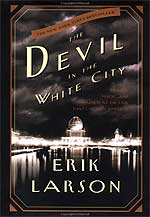
Erik Larson’s The Devil in the White City is the true story of the building of the magnificent 1893 Columbian Exposition World’s Fair in Chicago and the sociopath murderer H.H. Holmes who preyed on young women coming to see the fair. In his telling, Larson transports us to the late 1800s from when Chicago first wins the right by Congressional vote to host the fair, beating out rival New York City, through the two years it took to build the White City, to the fair itself, which brought in an estimated 40 million visitors during the short time it was open. Daniel H. Burnham, chief architect of the fair, led the extraordinary effort to build the fair, a feat no one thought could be accomplished in the time given. The fair drew the best engineers, architects, and designers the country had and forever transformed the shoreline of Chicago. The result was such a resounding success, Bernham imprinted grandeur into the minds of visitors who came from all over the country and set the course of American neo-classical architecture for the next fifty years.
A few miles away, in the Chicago suburb Englewood, a more sinister story was unfolding. Dr. H.H. Holmes built a boarding house on a full city block, complete with torture chamber and crematorium in its basement. On the first floor of the building Holmes ran a pharmacy, complete with bogus cure-alls, a restaurant, and several seemingly respectable businesses – fronts for countless fraud schemes.
Continue reading →
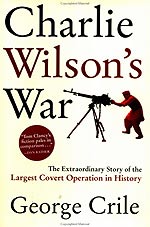
September 11th made it clear that thousands of Afghans that we had armed and trained had become terrorists with the US now in their sights. How did Afghanistan become a training ground for terrorists? George Crile’s Charlie Wilson’s War is the story of how one man, U.S. Congressman Charlie Wilson, Rep. Texas, almost single-handedly launched the several billion dollar CIA operation in Afghanistan to force out the occupying Soviets, without a vote in Congress, and without the clear approval of the President. What started as barely a nuisance campaign turned into the greatest covert operation in CIA history.
Continue reading →
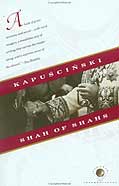
In Shah of Shahs Polish journalist Ryszard Kapuscinski turns his focus to the former Shah of Iran, the CIA supported dictator whose oppressive regime led to the revolution that took Americans hostage in their own embassy, caused the shah’s exile, and resulted in the fundamentalist Islamic government that runs Iran today. Kapuscinski published this book in 1982, just a few years after the revolution. In his unique style Kapuscinski weaves history, stories of individuals, and his own observations and interpretations.
It seems as if in every oppressive regime, there is a police authority, a spy network that detains and tortures anyone suspected of not being loyal to the ruling regime. In Iran, that group of thugs was the Savak.
Continue reading →
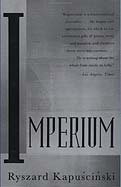
Writing as a correspondent for various Polish journals and press agencies over several decades, Ryszard Kapuscinski travelled extensively through Africa, Latin America, and the former Soviet Union, documenting brutal conflicts and ravaged countries. Ryszard has a poetic ability to delve underneath the surface of geopolitics and reveal stories at a human level.
In Imperium, Kapuscinski covers the human experience in the territories of the former Soviet Union, starting with his remembrances as a young boy in Poland in 1939, hungry and wondering in quiet fear as his friends got deported, presumably to Siberia. In the 50s and 60s, and then again after Perestroika, Ryszard travels to the far flung outposts of former Soviet territories, reflecting upon the after affects of Stalin and later the dramatic changes from the disintegration of the Soviet empire.
Continue reading →
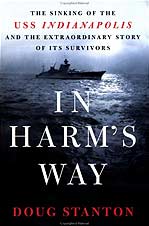
On the night of July 29th, 1945, the USS Indianapolis, returning from a secret mission to deliver the Hiroshima atomic bomb, was torpedoed by a Japanese submarine and sunk within 12 minutes. Of the 1200 or so men on board, around 300 were killed immediately, 900 abandoned ship. Through a series of Navy communication snafus nobody knew that the Indianapolis was sunk or even missing. The surviving men were picked up four and half days later after a bomber flying overhead happened to notice the oil slick in the water and groups of men in the water. By the time they were rescued, only a little more than 300 of the original 900 had survived. The rest had succumbed to dehydration, delirium, injuries, and sharks. Sharks fed twice a day at dawn and dusk and picked off about 50 men a day.
In Harm’s Way: The Sinking of the USS Indianapolis and the Extraordinary Story of Its Survivors by Doug Stanton is a story of courage and despair, death and survival. Stanton spent a year researching and writing this book, interviewing USS Indianapolis survivors and recording their stories. The book is a fast and gripping read; I highly recommend it.
Links:
Interviews with USS Indianapolis survivors





